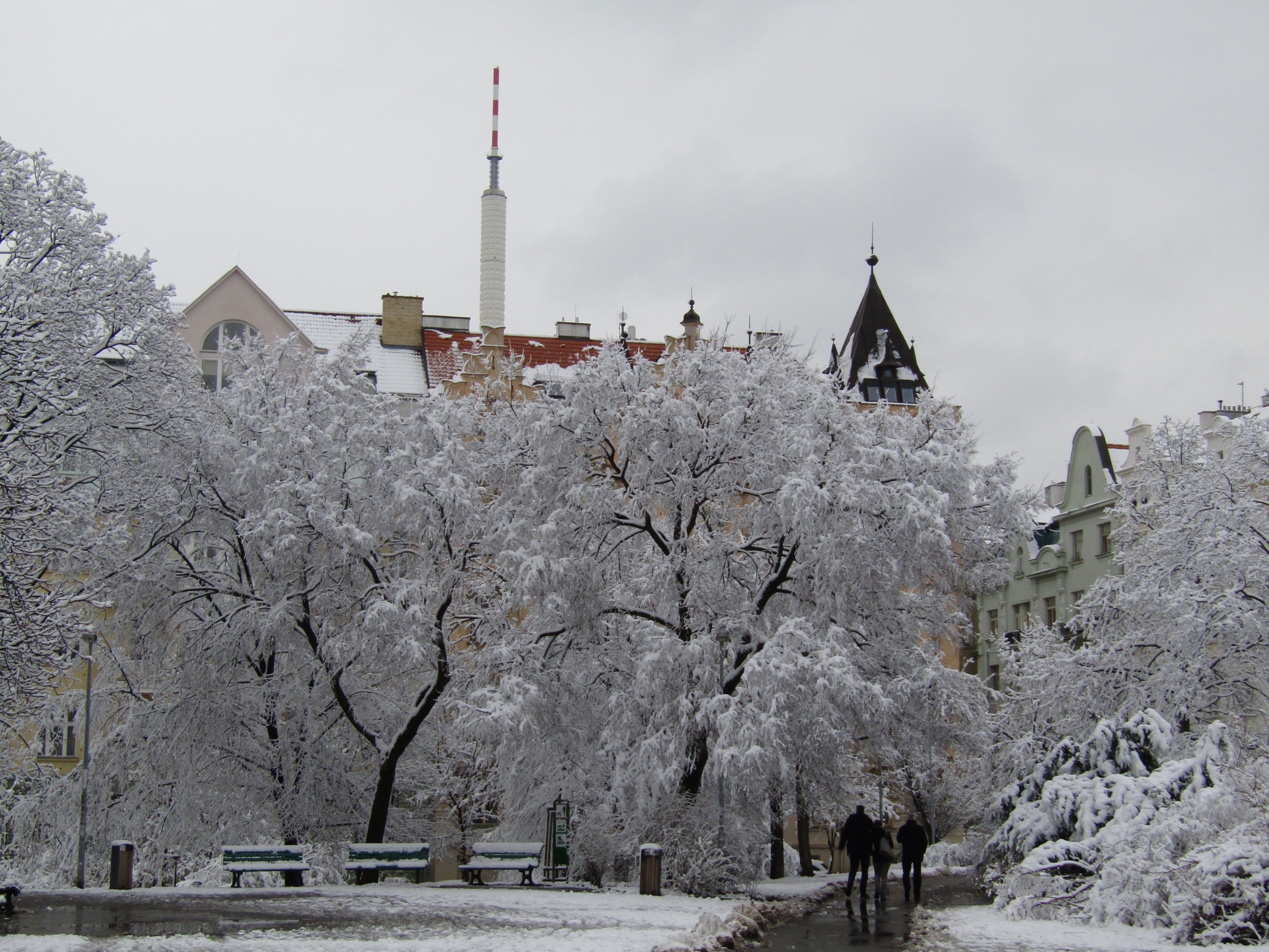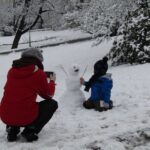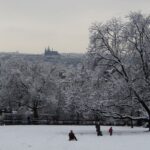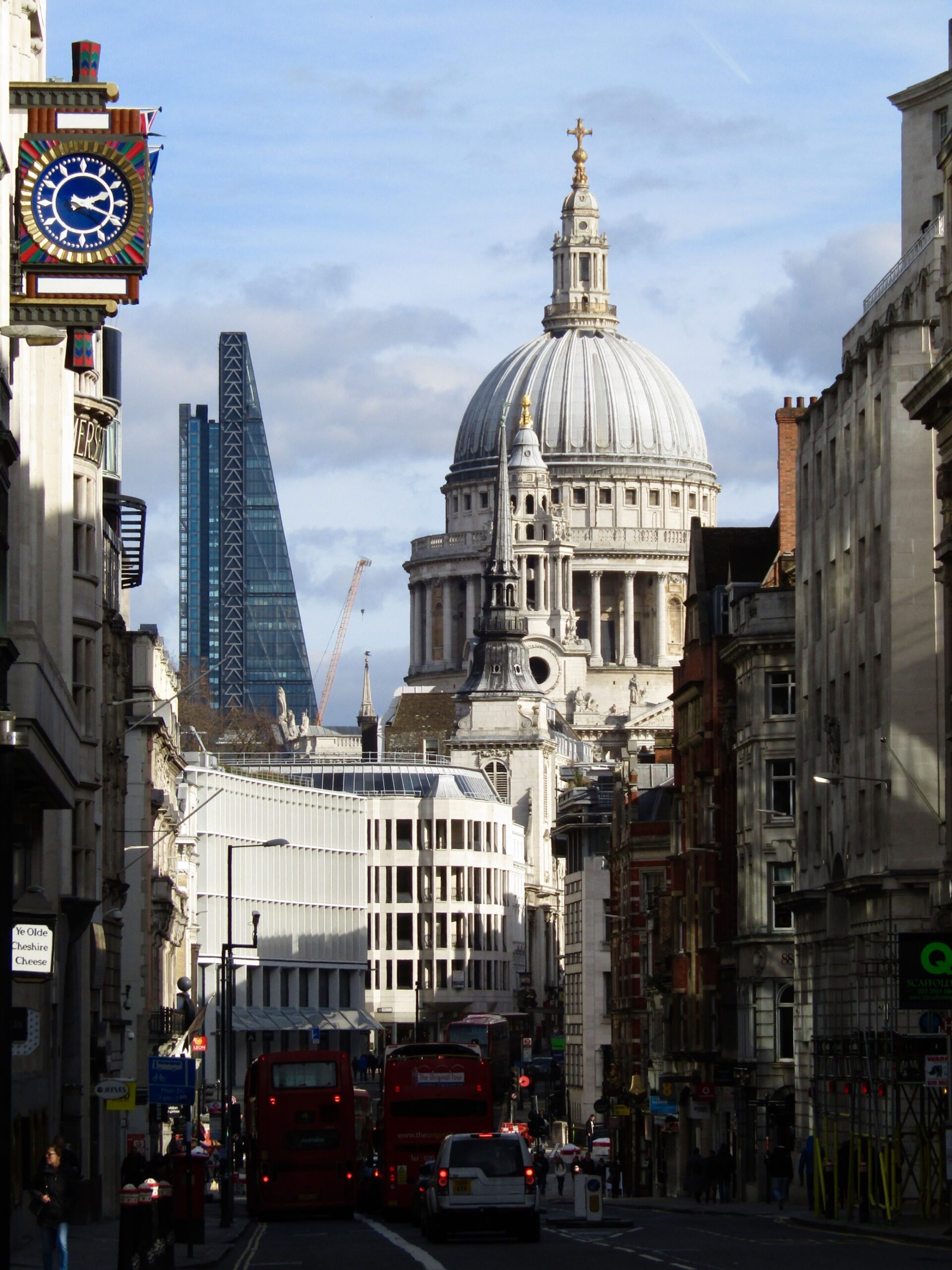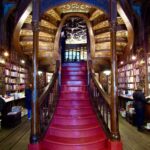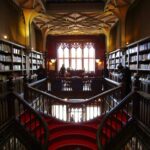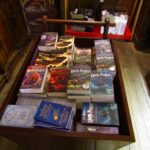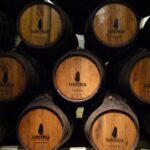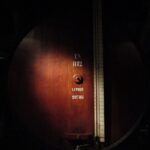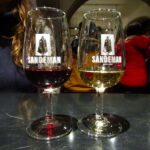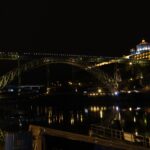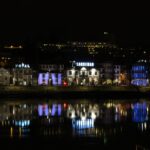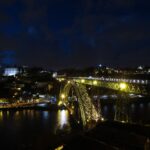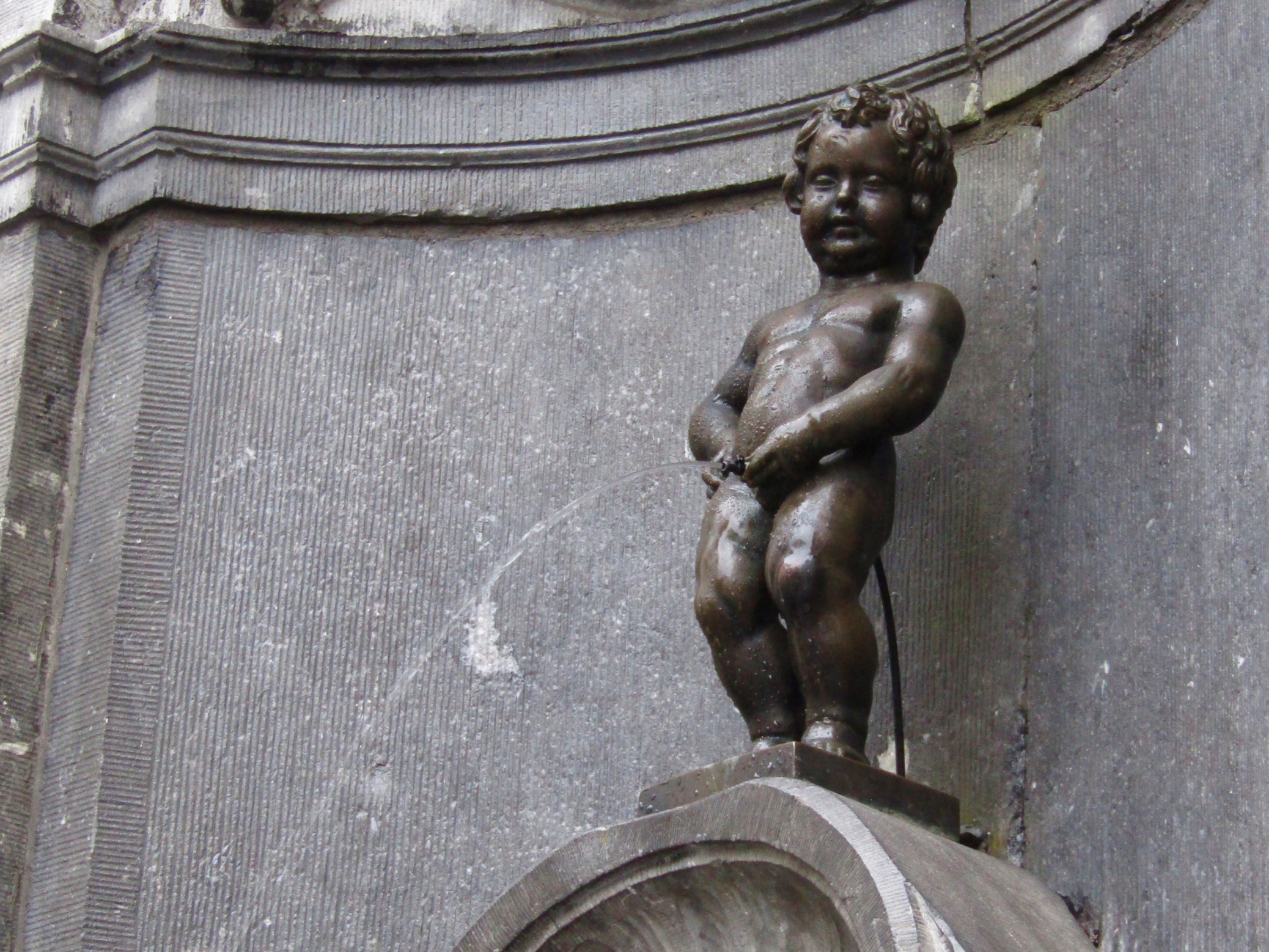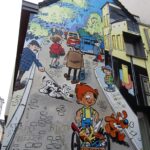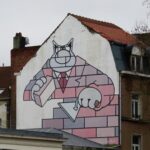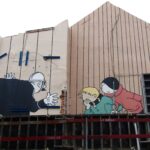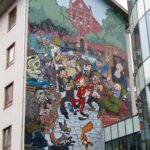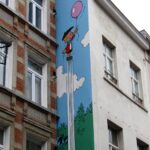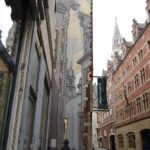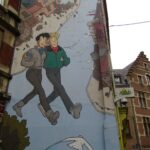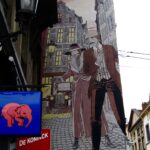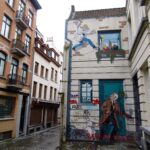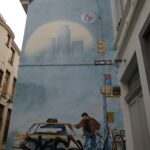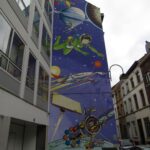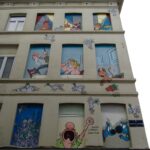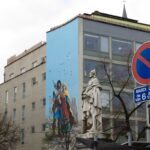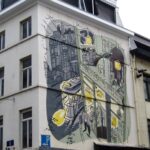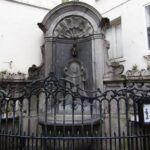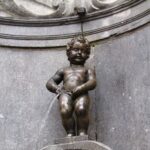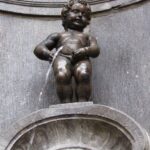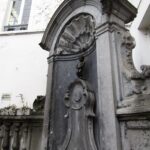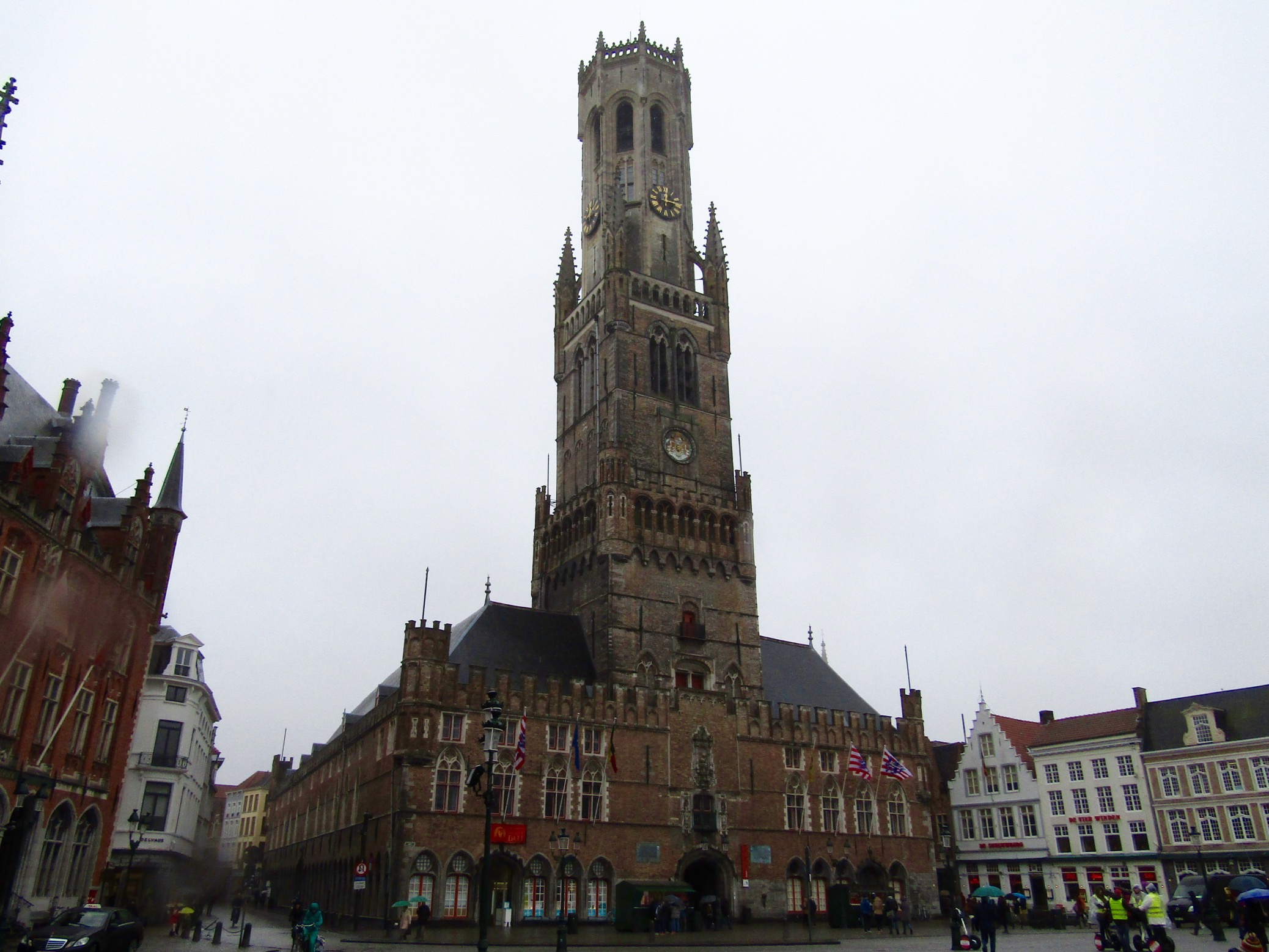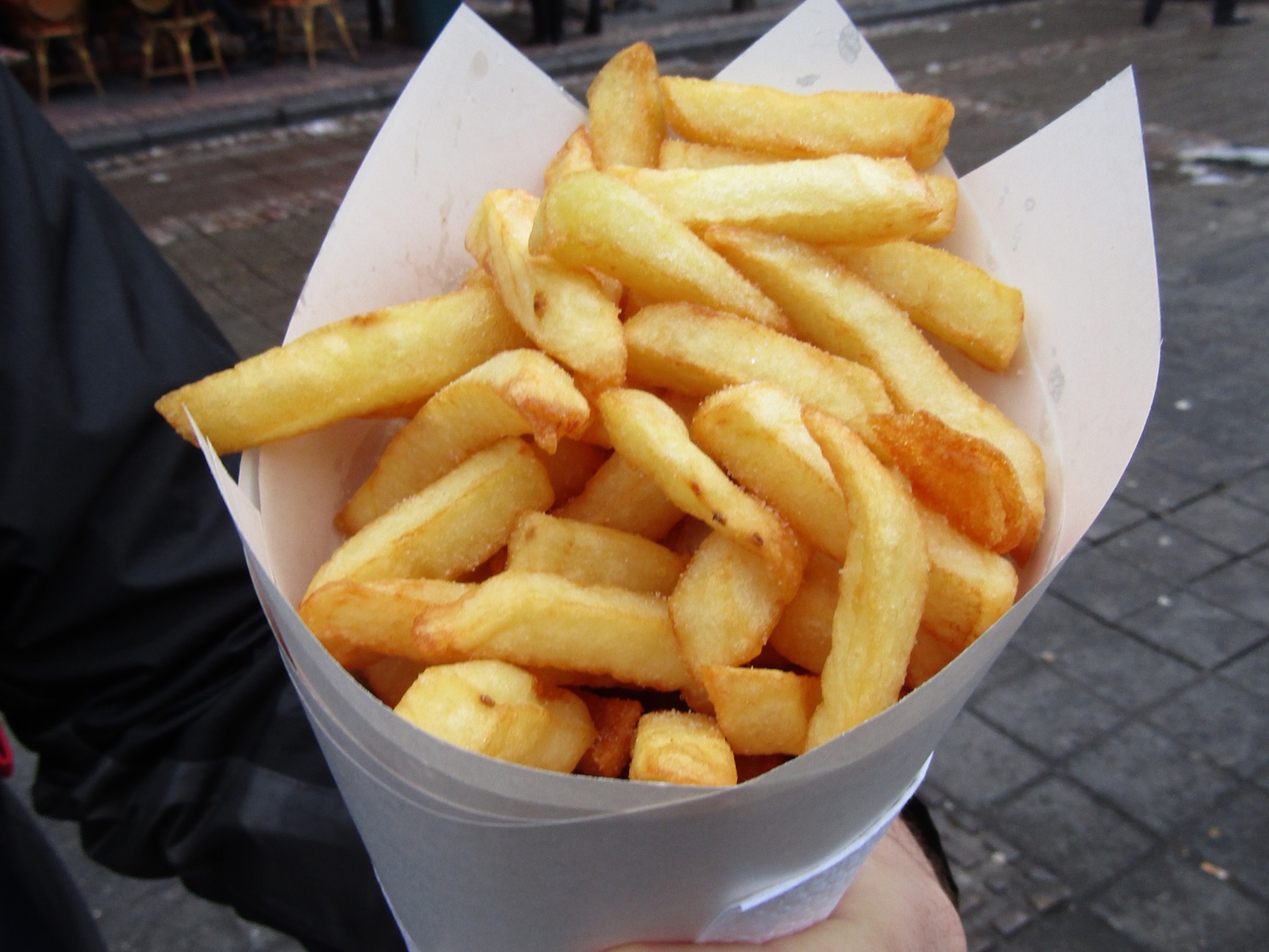I peeked out our window on the morning of day 36 to see a light dusting of snow on top of the car parked outside. The ground in the courtyard seemed clear, so we bundled up and set out for a day of sightseeing. We opened the front door to quite a surprise…
Several inches of snow had fallen overnight, covering Prague in a beautiful blanket of white. The sidewalks and streets had mostly turned to slush, but everything else had become props in a winter wonderland.
We took a shortcut through the National Museum park where the snow stacked tall on the narrow tree branches before stopping for a morning coffee. In a moment of serendipity, the specialty at Cafedu was a marshmallow cappuccino, a grown-up version of the marshmallow hot chocolate mandatory on a snow day in the States. Perfect!
The cafe is at the beginning of the old Vinohrady neighborhood with its Art Noveau apartments. We climbed the steps into Riegrovy Sady, one of Prague’s many sprawling parks. In the summertime, the large beer garden in the center of the park would draw visitors in droves. On this snowy day, it was mostly full of kids who’d brought their sleds out to make the speedy runs down the steep slopes, only to make the slow climb back to the top to repeat the thrill once more.
Just outside the park’s northeast exit, a small pub simply named The Tavern offered the famous Czech pilsners alongside a wildly creative American-style burger menu. We ordered The two veggie burgers on the menu, split a beer and enjoyed the warmth.
After lunch, we walked through Vinohrady. Named for the wine vineyards that covered the hills from the 14th-19th centuries, the neighborhood experienced an Art Nouveau revolution in the early 1900s, creating the unique residential area that still exists today. Its bright, multicolored buildings were made more vibrant by the white curtain that surrounded them. Only a few people bothered to wander the streets, none of them appeared to be our fellow tourists… a sign we’d gotten off the beaten path.
In the center of the neighborhood, the Žižkov Television Tower sprouts up like an unsightly weed. Built in the late 1980s, the architecture is somewhere between Soviet and sci-fi. Locals, dismayed by the way it soared above Prague’s medieval skyline, used more colorful names for it. At the end of the Cold War, it was believed to have been used to block Western broadcast signals, including the Radio Free Europe anti-Communist radio network.
We ended our walk in Prague’s Peace Square on Americka Street. A branch of the popular Prague Beer Museum (not an actual museum, just an awesome pub with a huge tap selection) gave us a taste of the Czech Republic’s craft brewing movement via their custom sampler tray. From fruit lagers to complex IPAs, it’s definitely worth Czeching out!
Having warmed up like the locals do, we set our sights on the top of Vitkov Hill, a park promising the city’s best views. The steep stairs and long, winding ramps to the top are worth it—probably more so on a clear summer day—as you can see over much of the Bohemian Basin to Prague Castle in the west and the red rooftops of Žižkov and Vinohrady to the south.
Back at the bottom, we crossed the river into the up-and-coming Karlín neighborhood to visit the small, but highly recommended, Simply Good bakery. We took a few classic Czech pastries to go, most of which made it all the way back to the apartment.




Click any photo in the gallery to see a larger version and start a slideshow view







More Photo of the Day posts from our January-March 2016 trip to Europe

